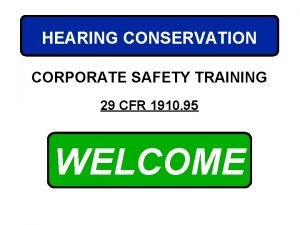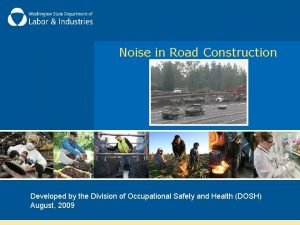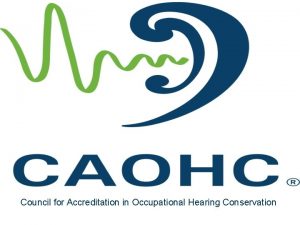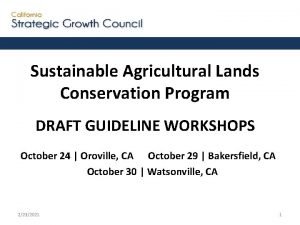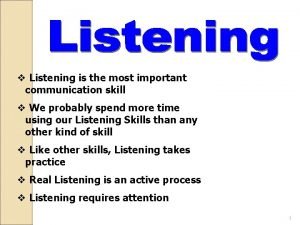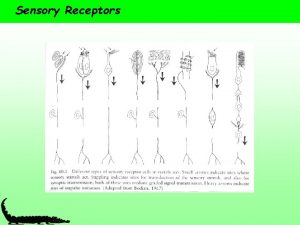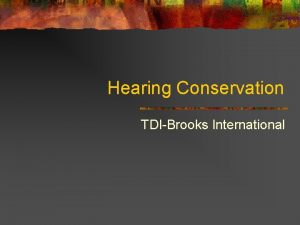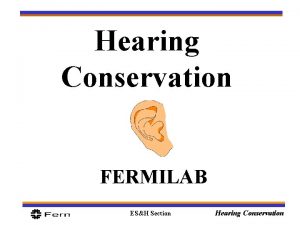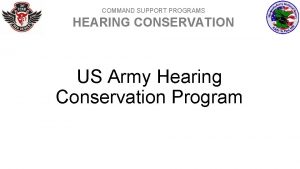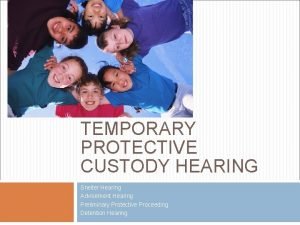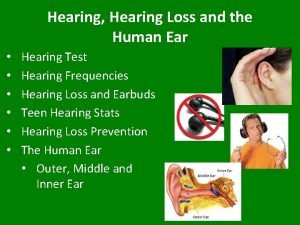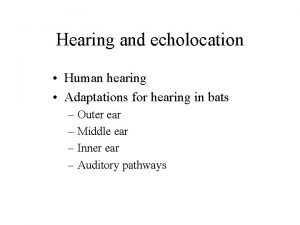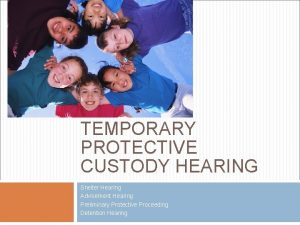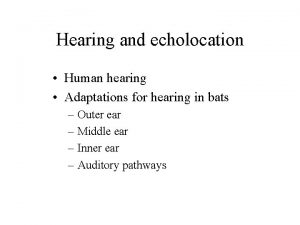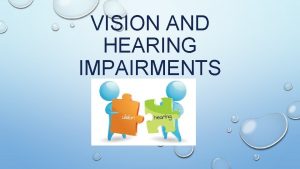HEARING CONSERVATION PROGRAMS Hearing Conservation Program What is











- Slides: 11

HEARING CONSERVATION PROGRAMS

Hearing Conservation Program What is it? A program provided by the mine operator to reduce occupational hearing loss among mine personnel – Monitors the miner’s noise exposure via dosimeter or Sound Level Meter (SLM) – Provides hearing protectors for protecting the miner’s hearing – Monitors the sensitivity of the miner’s hearing via audiometric testing – Trains the miner to protect their hearing

Hearing Conservation Program It MUST include: § A system of monitoring § Provision and use of hearing protectors § Audiometric testing § Training § Record keeping

What is a system of monitoring? An evaluation of a miner’s work environment – A noise survey of equipment and work tasks Dosimeter – Measurement of a miner’s noise dose

What is a system of monitoring? An evaluation of a miner’s work environment – Operator notifies the miner of… § Exposure determination – Provided the miner has not been notified in the last 12 months § Action being taken if exposure… – – – Equals or exceeds the action level Exceeds the permissible exposure level Exceeds the dual hearing protection level – Operator maintains a copy of miner’s notification

Hearing Protectors – Earmuffs, Earplugs, or combination of plugs and muffs http: //www. msha. gov/1999 noise/hearingprotect. xls

Hearing Protectors When and what type… TWA 8 – Time-weighted Average 8 -hour sound level (d. BA) D – Noise Dose (%) – Action Level (TWA 8 ≥ 85 d. BA or D ≥ 50%) § Operator must provide two plug types & two muff types of hearing protection § It is the miners option to wear hearing protection, UNLESS – The miner has incurred a Standard Threshold Shift (STS); or – More than 6 months will pass before the miner can take a baseline audiogram – Permissible Exposure Level (TWA 8 > 90 d. BA or D > 100%) § Miner must wear one type of operator-provided hearing protection – Dual Hearing Protection Level (TWA 8 > 105 d. BA or D > 800%) § Miner must wear both earplug and earmuff type operator-provided hearing protection

Audiometric Testing – The operator must offer miners the opportunity to take an annual audiogram – The miner must avoid high levels of noise for at least 14 hours prior to taking a baseline audiogram; Hearing protectors may be used as a substitute for this quiet period

Annual Training Topics – Effects of noise on hearing – Purpose and value of engineering controls & wearing hearing protection – Pros and Cons of hearing protection offered – Care, fit, and use of available hearing protection – General requirements of CFR 30 Part 62 – Maintaining noise controls – Purpose, value, and procedures of audiometric testing

Record Keeping § The mine operator is required to keep accurate records of the following… – Training certifications – Notice of exposure – Audiogram results – Reportable hearing loss § It is recommended that the miner keep copies of any information provided by the mine operator for their own record

Hearing Conservation Programs – Miners’ hearing is precious and we need to work together to preserve their quality of life
 Hearing conservation program audit checklist
Hearing conservation program audit checklist Hearing conservation program dosh
Hearing conservation program dosh Caohc certification
Caohc certification Disadvantages of waterfall model in software engineering
Disadvantages of waterfall model in software engineering Haccp prerequisite programs
Haccp prerequisite programs Sustainable agricultural lands conservation program
Sustainable agricultural lands conservation program Types of reflective listening
Types of reflective listening Barriers to communication
Barriers to communication Listening vs hearing
Listening vs hearing What are the different types of sensory receptors
What are the different types of sensory receptors Exposition of romeo and juliet
Exposition of romeo and juliet Hearing on advisement
Hearing on advisement
